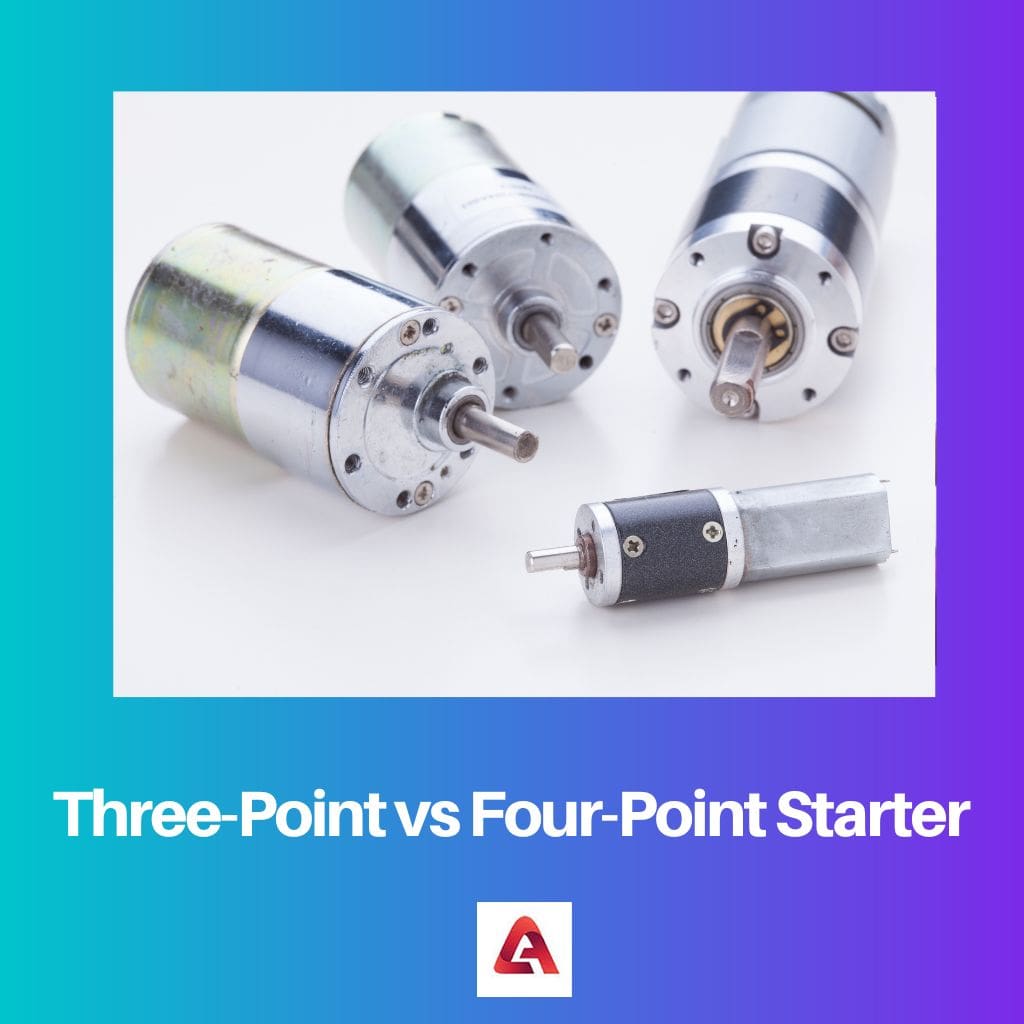The three-point starter has three terminals and connects the motor to the DC power source through a three-terminal switch which uses a single resistor. The four-point starter has four terminals and connects the motor to the DC power source through a series of resistors in the intermediate circuit.
Key Takeaways
- Three-point starters are used for shunt and compound wound DC motors, whereas four-point starters are primarily used for series wound DC motors.
- Four-point starters provide better protection against field winding failure than three-point starters, as they have a separate control for the field winding.
- Three-point starters offer simpler construction and lower costs than four-point starters, making them more common in many applications.

What is Three-Point Starter?
A DC induction motor starts with a three-point electrical motor starter. The device comprises a contractor, an overload relay, and a manual switch. A contactor is an electrically controlled switch to start and stop the engine. To safeguard the motor against current overloads, utilize the overload relay. The manual switch manages the speed of the motor.
When the manual switch is activated, the motor is switched on, the contactor is powered, and the motor begins to run at its rated speed. The overload relay keeps track of how much current the motor is using as the engine runs. If the current is higher than the permitted value, the overload relay trips, de-energizing the contactor and shutting off the engine.
Starting and safeguarding AC induction motors can be done with a reasonably straightforward and affordable three-point starter. It offers a dependable and durable option for many applications, including pumps, conveyors, and other industrial machinery. Additionally, it can be utilized in home appliances like fans and air conditioners.
What is Four-Point Starter?
A four-point starter is a group of electrical components that start big electric motors. It ignites powerful engines, such as those powering fans, pumps, and reciprocating compressors. In electrical setups, when the motor load is too great for a direct-on-line starter, it is also utilized to start large motors.
The four-point starter comprises a motor contactor, an overload relay, a timer, and a starting switch as its major parts. The motor contactor, an electromechanical device, manages the power supply to the motor. The overload relay is used to guard against overcurrent on the engine.
The timer controls the motor’s starting torque, and the starting switch is used to start the engine manually. When the starting switch is activated, the motor contactor closes, allowing power to flow to the motor. The overload relay monitors the current flowing to the motor and will open the contactor if the current exceeds a predetermined value. The timer then controls the ramp-up of the motor’s speed, increasing it gradually until it reaches its full speed.
Large motors can be started with the four-point starter efficiently and affordably. It guarantees a smooth start and eliminates abrupt current spikes that can harm the engine or the power grid.
Difference Between Three-Point and Four-Point Starter
- Four-point starters have a more complex wiring diagram than three-point starters, which have simpler ones.
- Small motors employ three-point starters, but large engines use four-point starters.
- Starters with three points regulate the motor’s speed, whereas starters with four points control the motor’s torque.
- For single-phase induction motors, four-point starters are utilized, while three-phase induction motors use three-point starters.
- In comparison to Four-Point Starter, Three-Point Starter has a lower starting current.
Comparison Between Three-Point and Four-Point Starter
| Parameters of Comparison | Three-Point Starter | Four-Point Starter |
|---|---|---|
| Definition | A motor starter having three terminals is known as a three-point starter. | A motor starter having four terminals is known as a three-point starter. |
| Comprises of | It comprises a contractor, a relay, and a manual switch. | It comprises a motor contactor, an overload relay, a timer, and a starting switch. |
| NVC | They connect in series with the field coil. | They connect in parallel with the field coil. |
| Shunt Connection | The shunt connection in it is provided separately from the line. | The shunt connection in it is connected with a line which is the drawback. |
| Control | They have a manual overload control. | They have an automatic overload control. |
- Crack stability in simply supported four-point and three-point loaded beams of brittle materials – ScienceDirect
- The three-point sprinter start versus the four-point sprinter start utilizing the whole instruction method – ProQuest
